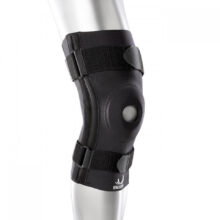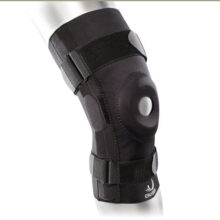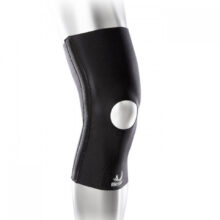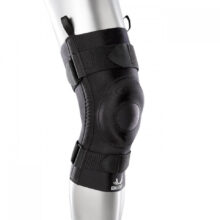Acupuncture Needles – J Type
Login For Dealer Pricing
Seirin acupuncture needles are Japanese made, come in boxes of 100 needles and are made from high quality stainless steel with a lightweight comfort oriented grip that is rounded for user safety.
Osteoarthritis is a form of arthritis that develops when the cartilage cushioning bone ends in the joint wears down over time. It is also the most commonly encountered form of arthritis. Osteoarthritis affects millions of North American adults in their middle-aged or later years. The areas most commonly affected are the hands, knees, hips and spine.
As with many other forms of arthritis, osteoarthritis causes pain, stiffness and swelling of the affected joints. It mainly affects adults over aged 60 and tends to attack one side (i.e. left or right) at a time.
There is no fundamental cure for osteoarthritis (i.e. no measures doctors can take that will eliminate or reverse the damage to joints). Instead, doctors usually try to manage the severity of its symptoms and slow the rate of progression of the disease. They will also try to preserve as much joint range of motion and function as possible.
As mentioned above, osteoarthritis is a result of the breakdown of bone cartilage. This causes the bone ends to rub directly against each other.
Cartilage is a tough but slippery mass that covers the ends of healthy bones. It allows the bones to glide smoothly and frictionlessly over each other as someone moves the joint.
Hence, the result of cartilage deterioration means that bone starts to rub directly against bone. This causes increasing joint pain and stiffness when the affected individual tries to move the joint.
The cartilage breakdown may be the result of wear and tear over time. It may also be the result of an earlier injury that causes the joint bones to be closer together. This can then cause increased bone on bone contact. This then causes faster cartilage breakdown than would otherwise be the case.
The effects of osteoarthritis, however, are not limited to the lining of bones in the joint. As time progresses, the disease also changes the shape of the bones themselves. It may also alter the connective tissues holding the joint together and attaching muscle to bone. Inflammation of joint lining is also a factor that creates the joint pain and stiffness characteristic of the disease.
There are several factors that can increase the probability that an individual may develop osteoarthritis. These include:
It is unusual for osteoarthritis to develop in people below the age of 40 years.
Osteoarthritis has many symptoms in common with other forms of arthritis. The most typical symptoms experienced by people with osteoarthritis are:
When the disease strikes, it usually (although not invariably) produces joint damage on one side only. This is in contrast to some other forms of arthritis such as rheumatoid arthritis, which usually develop on both sides simultaneously.
Quite unlike rheumatoid arthritis, osteoarthritis does not cause any systemic symptoms.
Possible Complications
Possible complications include a progressive loss of ability to carry out normal activities of daily living without pain and discomfort. As the disease progresses, even simple things like taking a walk, bathing and dressing become increasingly painful.
A badly affected knee or hip joint can cause poor mobility and problems walking. This could also predispose to falls. Bad OA of the hip can make it difficult to put on shoes and socks. It can also make it difficult to get in and out of a car.
In extreme cases, affected individuals will go to extreme lengths to avoid the daily pain and discomfort of the disease. For example, they may stay in bed longer to avoid having to move.
The pain can nevertheless be experienced even while sleeping, so sleep disturbance is another possible complication.
The net effect of these developments can be the onset of depression as the patient’s quality of life deteriorates.
The first step in diagnosing the cause of joint pain and stiffness may be a physical examination of the affected joint. The doctor will look for signs such as tenderness, swelling, redness and loss of range of motion (i.e. reduced flexibility).
The doctor may also review the patient’s medical history. Of particular interest will be previously experienced injuries of or near the affected joint. These may be causing the osteoarthritic symptoms the patient is experiencing. As mentioned above, some injuries can change the joint and increase the risk of later osteoarthritis development.
Most cases of OA can be diagnosed based on age, history and clinical examination. Tests like blood tests and X-rays are not usually needed.
Once the physical examination has been completed, the doctor may request a series of imaging studies. The doctor may sometimes order X-rays or other tests if she wants to exclude other problems. These will provide a better idea of what is going on inside the affected joint.
The specific studies requested may include:
As final confirmation of the indications of the physical examination and imaging studies, doctors may request testing of patient blood samples. They may also test fluid drawn from the affected joint.
The blood test results can help to eliminate other conditions e.g. rheumatoid arthritis that may also be causing joint pain and stiffness or gout.
Joint fluid can be tested for inflammation and/or bacteria that may identify other conditions. These may for example include gout (an inflammatory form of arthritis). Joint fluid can also reveal an infection like septic arthritis that may be causing the patient’s joint pain.
There are some home based treatments that one can use for mild cases of osteoarthritis, such as:
The home based exercises will help to improve joint function for those with mild cases of the disease. This will help them to maintain the ability to perform routine tasks without too much pain. For even more progress, the physical therapy exercises mentioned below can also be considered.
Doctor based treatment plans for osteoarthritis can be classified into three groups – medications, therapy treatments and surgery.
Osteoarthritis patients may be prescribed pain relief medications, including:
These can include:
These may include:

Login For Dealer Pricing
Seirin acupuncture needles are Japanese made, come in boxes of 100 needles and are made from high quality stainless steel with a lightweight comfort oriented grip that is rounded for user safety.

Login For Dealer Pricing
Relieve your patients’ tibiofemoral and patellofemoral OA pain with the BioSkin OA Spiral Knee Brace. It provides clinically validated pain relief and is easy to fit, apply and use. Made in the USA.

Login For Dealer Pricing
The Bio Skin Patella Stabilizer is an excellent choice to treat anterior knee pain and other knee problems. Constructed from Bio Skin’s patented, breathable materials, the patella stabilizer gives excellent compression to control swelling and decrease pain in the knee. The donut shaped buttresses stabilize the patella and help keep swelling away from the knee joint. The brace is comfortable to wear and stays in place even during vigorous activity.

Login For Dealer Pricing
Relief and support for sore knees with performance foam patellar ring
The Bio Skin Patella Stabilizer with Conforma Hinge is an excellent choice to treat anterior knee pain and other knee problems. Constructed from Bio Skin’s patented, breathable materials, the patella stabilizer gives excellent compression to control swelling and decrease pain in the knee. The donut shaped buttresses stabilize the patella and help keep swelling away from the knee joint. The brace is comfortable to wear and stays in place even during vigorous activity.


Login For Dealer Pricing
Medium-level compression for minor pain and instability
The Bio Skin Standard Knee Skin provides optimal compression to decrease knee pain, control swelling, and increase proprioception. The design features a two-panel construction so there is no seam in the sensitive area behind the knee. Bio Skin’s unique, patented materials make the brace breathable and comfortable, and wicks moisture away from the skin. All Bio Skin materials are 100% neoprene free and latex free!

Login For Dealer Pricing
Silicone ring helps keep swelling off the joint
The Bio Skin Visco Knee Skin with Conforma Hinge is an excellent all-purpose knee support. The Visco gel ring around the patella provides passive massage to remove swelling and decrease knee pain. The brace is comfortable enough to wear all the time and is very useful a few weeks after knee surgery to control swelling and speed recovery. Constructed fromBio Skin’s patented, breathable materials, the Visco Knee Skin gives excellent compression. Finger loops make application easy.


Login For Dealer Pricing
Silicone ring helps keep swelling off the joint
The Bio Skin Visco Knee Skin with Thigh & Calf Straps is an excellent all-purpose knee support. The Visco gel ring around the patella provides passive massage to remove swelling and decrease knee pain. The brace is comfortable enough to wear all the time and is very useful a few weeks after knee surgery to control swelling and speed recovery. Constructed fromBio Skin’s patented, breathable materials, the Visco Knee Skin gives excellent compression. Finger loops make application easy.